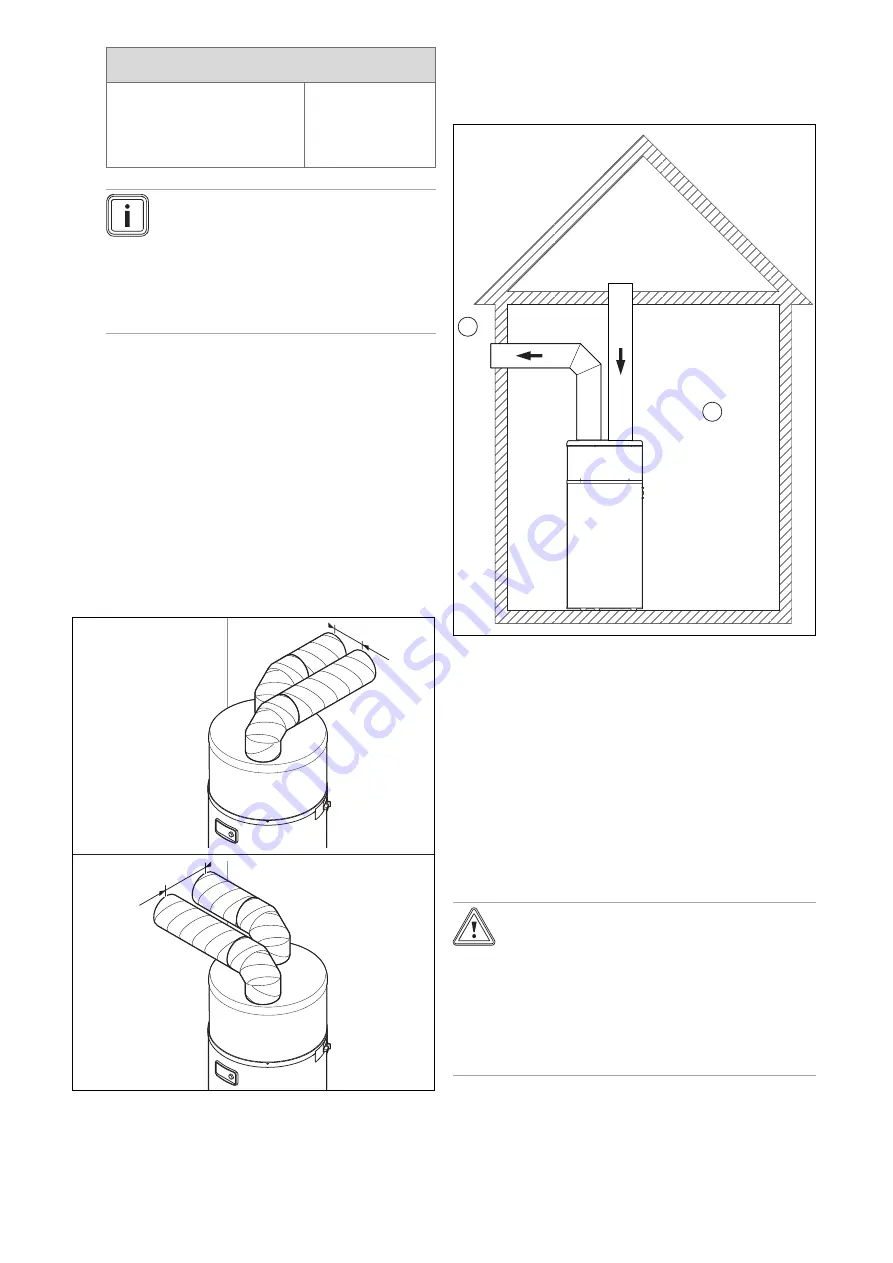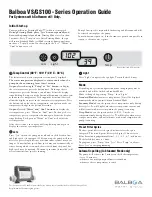
0020285063_05 Installation and maintenance instructions
11
Maximum length of the air pipes L1 + L2 (L1 = air in-
take pipe; L2 = air outlet pipe)
Condition:
Fixed pipes
20 m
Note
In addition to the total
length, two 90° el-
bows can be added.
Note
In an installation with rigid pipes, elbows, at-
tachments and mesh create additional pres-
sure losses in the air duct system that may
correspond to five metres of straight pipe
length per element. Make sure that the max-
imum permitted lengths are not exceeded
with the elements used.
2.
Protection devices must be installed at the openings
of the air ducts to prevent water or foreign bodies from
penetrating the pipelines (protective grille for vertical
walls, roof terminals).
3.
Always protect the product against modification or
intervention in order to prevent water or foreign sub-
stances from penetrating as this may damage the
pipes or other components.
4.
Use a circulation pump with a throughput between 0.5
and 4 l/min.
5.1.2
Installing the complete pipe system
Complete pipe system
The air inlet and outlet are located in the external area.
220
292
This installation type is particularly suitable for small rooms
(supply or store room, etc.).
This configuration prevents a room from being cooled and
does not impair ventilation.
▶
In order to prevent leak air from being extracted by recir-
culation, maintain a clearance between the ends of the
air pipes.
–
Clearance:
≥
220 mm
1
2
Complete pipe system
1
External area
2
Internal area (heated or
not heated)
5.1.3
Installing the partial pipe system
Partial pipe system
The hot air is drawn into the room and the cold air is
released outside.
With this installation type, the room is used as an energy
collector. The room is cooled by outdoor air which flows in
via the ventilation openings.
–
Room volume at installation site:
≥
20 m
³
Caution.
Risk of material damage due to condensa-
tion forming on the outside of the pipe.
The difference in temperature between the
air flowing through the pipe and the air in the
installation room can cause condensation to
form on the outside surface of the pipe.
▶
Use air pipes with suitable heat insulation.
▶
Avoid having negative pressure in the installation room,
so that air is not extracted from surrounding heated
rooms.
▶
Check whether the existing ventilation can compensate
for the withdrawn air flow.












































